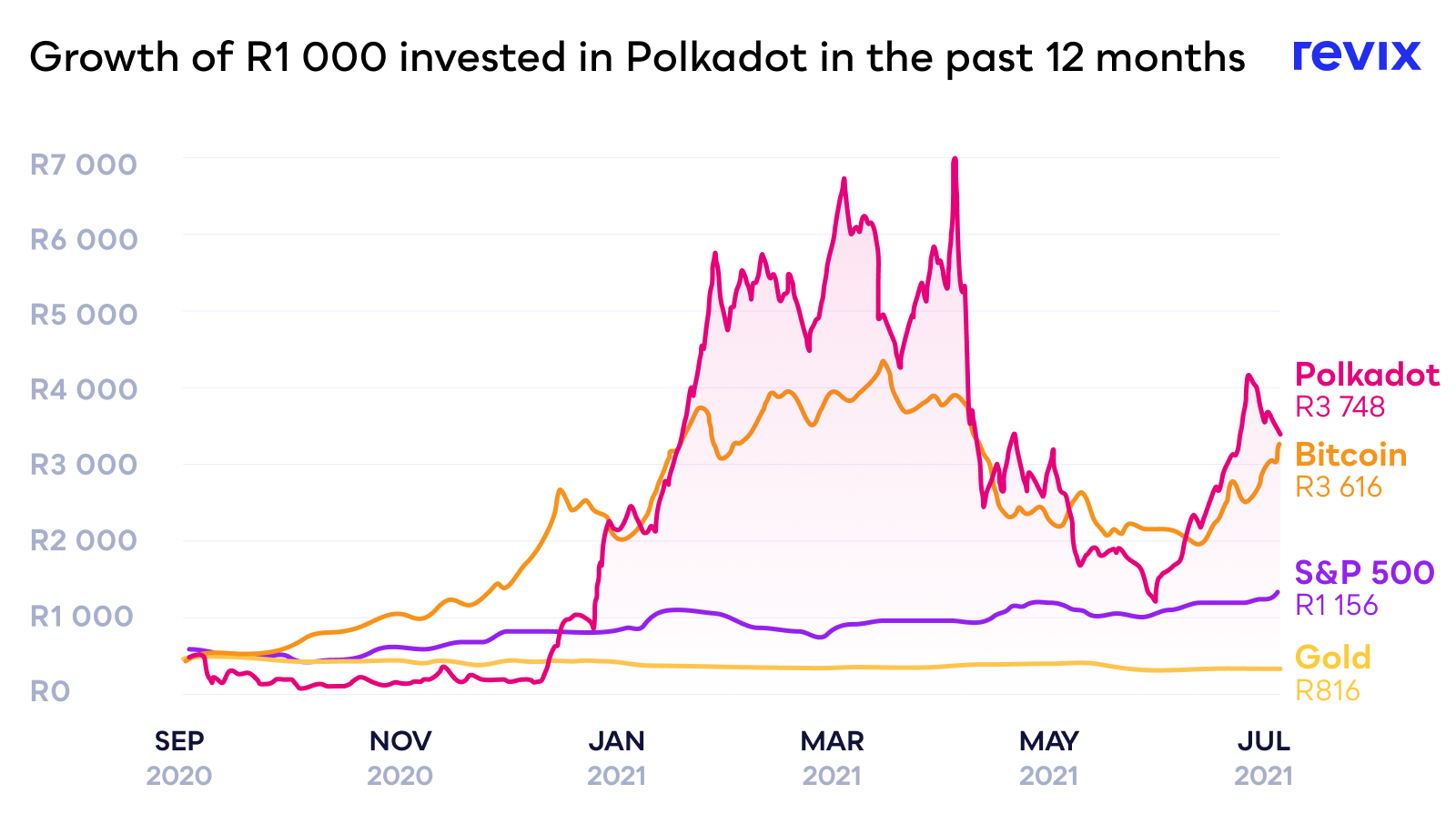Connecting the dots is actually very apt when we’re talking about the blockchain platform Polkadot and its cryptocurrency DOT.
If you’re a complete crypto newbie, chances are you’ve never heard about Polkadot — a rather impressive blockchain platform that was designed to solve some of the longest-standing issues in the crypto and blockchain industry, including interoperability (the way blockchains speak to one another) and scalability.
What is Polkadot?
Frustrated with the slow development of Ethereum, Dr Gavin Wood, a co-founder of Ethereum and inventor of the programming language Solidity, left to begin work on Polkadot.
Right now, blockchains fall into one of two major categories. They’re either purpose-built and designed for a very specific function, such as Bitcoin, which was specifically designed as an alternative payment system and store of value. Or they can be more open and general in their functioning and can be applied to a wide range of uses like Ethereum or Cardano, which can be used for building decentralised applications (dApps) — which are basically just blockchain-based versions of regular apps, like the ones you get on your phone.
On the other hand, Polkadot is a blockchain that provides an environment that other blockchains, known as “parachains”, can run on. It essentially provides the infrastructure that other blockchains can use to interact with one another securely. Polkadot has been designed with one purpose in mind — to unite an entire network of blockchains — from Bitcoin to Ethereum to all those other cryptocurrencies you’ve never heard of.
As things stand, developers have to choose which blockchain to build their applications on. Each chain is unique and has its own strengths and weaknesses that developers have to weigh up when deciding where to develop. For example, Ethereum has a large network that is robust and easy-to-use, but it’s relatively slow and expensive to use. While competitors, like Solana, were built for the prioritisation of scalability.
The problem: Blockchains can’t talk to each other
If you choose to develop on Solana (another top 10 cryptocurrency similar in structure to Ethereum), you won’t be able to interact with the Ethereum blockchain and thus lose the ecosystem Ethereum has to offer.
Therefore many blockchains make different trade-offs to support specific features and use cases, and as blockchain specialisation increases, the need to transact between them will only increase over time.
This is where Polkadot steps in.
Polkadot enables these different blockchains to operate seamlessly together at scale. This enables developers to customise the specific features they want, giving them flexibility to opt into those parts of the Polkadot network that suit their project and stay away from those parts that don’t. Furthermore, it enables their project to be able to operate across multiple blockchains, therefore not closing them off to just the blockchain they have built their project on.
Polkadot acts as a framework for all blockchains that opt in, a bit like how the programming language HTML enables websites, browsers, and servers to interact with each other. The idea is to take care of messy and costly cryptocurrency mining processes (including validation of transactions and security protocols) and enable developers to focus on creating blockchain-based apps.
Polkadot’s cryptocurrency, DOT, plays a key role in maintaining and operating the Polkadot network.
What makes Polkadot unique?
- Solving for blockchain communication
Blockchains function as separate islands of data with little way of leveraging the information the other networks possess. Polkadot eliminates these concerns through their “multi-chain” network, which enables information transfer between blockchains. This is a valuable function that will be increasingly used in the future of blockchain technologies.
- Solving scalability
Bitcoin only processes 3-5 transactions per second, and Ethereum processes 10-15 transactions per second. For context, Visa processes 1 700 transactions per second. This indicates the scalability issue both these cryptocurrencies face. Yet, Polkadot is a winner when it comes to scalability. Polkadot should be able to process up to one million transactions per second.
- An easy way to build custom blockchains
Polkadot enables users to build their own blockchain from scratch using their suite of functionalities while also giving you the freedom to customise anything you need. Custom blockchains can be built within minutes and give you access to their security, scalability and interoperability. You are also not confined to write your blockchain logic in a Polkadot specific language, but rather it accepts multiple languages.
Polkadot’s Performance
Below we can see how Polkadot has outperformed many other investment assets over the past 12 months.

A R1 000 investment in Polkadot would have translated into +R3 748. This is substantial when compared to many alternative investments. In fact, this return on investment is over 17x greater than if you had invested in the S&P 500 over the same period (+ R1 156).
Where do I buy Polkadot?
Cape Town-based crypto investment platform Revix (www.revix.com), which is backed by JSE listed Sabvest, is adding Polkadot to its crypto product offering on Friday 3 September, with an enticing fee-free promotion.
Investment Promotion
Revix will offer zero buying fees on Polkadot purchases for one week, starting on the 3rd of September and ending on the 9th of September 2021.
Through Revix, you can also gain access to their ready-made “Crypto Bundles”. Their Bundles enable you to effortlessly own an equally-weighted basket of the world’s largest and, by default, most successful cryptocurrencies without having to build and manage a crypto portfolio yourself. They’re like the JSE Top 40 or S&P 500 but for crypto.
For more information, visit www.Revix.com.